Description
- Manufacturer: Sanzyme Ltd.
- Release form: 5000 I.E.
- Active ingredient: gonadotropinum chorionicum
- Country: India
Short description :
Activity : 8-12 hours (residual effect up to 24 hours)
Classification : Chorionic Gonadotropin
Dosages: 10002000 IU 23 times a week.
Acne: No
Water retention : No
High blood pressure : No
Hepatotoxicity : No
Aromatization: No
DHT Convert : No
Suppression of HPTA function : No
PHARMACOLOGICAL PROPERTIES: Pharmacodynamics. Pregnyl human chorionic gonadotropin (hCG), obtained from the urine of pregnant women. It stimulates steroidogenesis in the gonads through a biological effect similar to that of human LH (similar to a hormone that stimulates interstitial cells). In men, hCG causes an increase in testosterone production, in women, an increase in estrogen production and especially progesterone after ovulation. With the introduction of hCG, antibody formation is not noted.
Pharmacokinetics. The maximum concentration of hCG in blood plasma in men is reached approximately 6 hours after a single intramuscular injection, and in women approximately 20 hours. areas in women. After intramuscular administration, hCG is well absorbed, its half-life is approximately 33 hours, about 80% decomposes mainly in the kidneys and is excreted in the urine.
INDICATIONS: In women, induction of ovulation in female infertility caused by anovulation or impaired follicle maturation, to prepare the follicle for puncture during controlled ovarian hyperstimulation in assisted reproductive technology (ART) programs, support for the luteal phase (including during the period of controlled ovarian hyperstimulation with ART) with the use of analogues of gonadotropin-releasing hormone or other means to stimulate ovulation in female infertility as a result of anovulation due to insufficient activity of endogenous estrogens (ovarian insufficiency of group I according to the WHO classification).
A man has hypogonadotropic hypogonadism, decreased reproductive ability associated with idiopathic dyspermia, delayed sexual development of boys due to insufficiency of the gonadotropic function of the pituitary gland, cryptorchidism unconditioned by anatomical occlusion.
APPLICATION: Pregnyl solution, obtained by adding a solvent to a lyophilized active substance, is slowly injected intramuscularly. Since the started ampoule cannot be resealed in such a way as to further guarantee the sterility of the contents, the solution must be used immediately after preparation.
Dosage for women. Ovulation induction or preparation of the follicle for puncture Pregnyl is usually administered once at a dose of 300,010,000 IU.
Luteal phase support 23 consecutive injections of Pregnyl at a dose of 10,003,000 IU each for 9 days after ovulation or embryo transfer (for example, on days 3, 6 and 9 after stimulated ovulation).
Dosage for men
The dosing regimens given are only approximate and should be adjusted individually depending on the respective response to treatment.
Hypogonadotropic hypogonadism Pregnil appoint 10002000 IU 23 times a week.
In male infertility due to insufficient spermatogenesis, Pregnyl can be administered in combination with FSH daily or 23 times a week for at least 3 months until spermatogenesis improves. For the period of this treatment, it is necessary to temporarily cancel the replacement therapy with testosterone preparations. Sometimes hCG alone is sufficient to maintain the improvement achieved.
Delayed sexual development Pregnil is used at a dose of 1500 IU 23 times a week for at least 6 months.
Cryptorchidism the drug is prescribed to children under the age of 2 years, 250 IU 2 times a week for 6 months, under the age of 6 years, 5001000 IU 2 times a week for 6 months, over the age of 6 years, 1500 IU 2 times a week within 6 months, if necessary, treatment can be repeated.
CONTRAINDICATIONS: hypersensitivity to human gonadotropins or to any of the components of the drug, the presence or suspicion of androgen-dependent tumors (carcinoma of the prostate or breast in men). The presence of uncorrected endocrinopathies (hypothyroidism, adrenal insufficiency, hyperprolactinemia). Ovarian cancer, fallopian tubes
SIDE EFFECTS: bruising, pain, redness, swelling and itching are possible at the injection site, sometimes allergic reactions, mainly in the form of a skin rash and soreness at the injection site, much less often in the form of a generalized rash and fever.
Among women.Unwanted ovarian hyperstimulation, ovarian hyperstimulation syndrome. Clinical symptoms of minor ovarian hyperstimulation syndrome are gastrointestinal disorders (abdominal pain, nausea, diarrhea), chest pain, mild to moderate enlargement of the ovaries or ovarian cysts. Sometimes severe ovarian hyperstimulation syndrome develops, which can be life threatening. It is characterized by the appearance of large ovarian cysts (predisposed to rupture), the development of ascites, weight gain, the appearance of hydrothorax and thromboembolic events.
In men. Sometimes after the use of the drug in high doses, water and sodium retention may occur due to an increase in androgen production. In some cases, hCG treatment can cause gynecomastia, proliferative changes in the prostate gland. As a result, an increase in the level of testosterone induced by the hCG preparation, a possible enlargement of the penis and an erection. Increased sensitivity of the nipples of the mammary glands, an increase in the testicles in the inguinal canal. Very rarely, a change in behavior to a similar one is possible, which is noted during the first phase of puberty.
SPECIAL INSTRUCTIONS: In women. In pregnancy that occurs after ovulation induction with gonadotropic drugs, the risk of multiple pregnancy increases, after auxiliary hormonal therapy, the risk of miscarriage, with tubal pathology, the risk of ectopic pregnancy (therefore, it is important to confirm the presence of intrauterine pregnancy with ultrasound). It is also necessary to exclude the presence of uncontrolled non-gonadal endocrinopathy (for example, dysfunction of the thyroid gland, adrenal glands, or pituitary gland).
Unwanted ovarian hyperstimulation. In the treatment of female infertility due to anovulation or impaired follicular maturation, prior administration of an FSH preparation may lead to unwanted ovarian hyperstimulation. Therefore, before treatment with menotropin and at certain intervals during this therapy, it is necessary to conduct ultrasound to assess the development of follicles, as well as to determine the level of estradiol in the blood. With the development of a large number of follicles, the level of estradiol can increase rapidly (for example, 2 times within 23 days). The diagnosis of unwanted ovarian hyperstimulation can be confirmed by ultrasound. In this case, the drug containing FSH should be immediately discontinued, since there is a risk of inducing multiple ovulations and ovarian hyperstimulation syndrome. This is especially important in the treatment of patients with polycystic ovaries. Clinical symptoms of minor ovarian hyperstimulation syndrome are gastrointestinal disturbances (abdominal pain, nausea, diarrhea), chest pain, slight enlargement of the ovaries or ovarian cysts. In rare cases, a severe form of ovarian hyperstimulation syndrome is noted, which can be life-threatening and is characterized by the development of large ovarian cysts (prone to rupture), ascites, weight gain, often hydrothorax, and sometimes thromboembolic complications.
In men.Treatment with hCG leads to an increase in androgen production; therefore, patients with latent or severe heart failure, impaired renal function, elevated blood pressure, epilepsy, or migraine (including patients who have been diagnosed with this pathology in the past) should be under constant medical supervision, since sometimes an increase in androgen production may cause deterioration or recurrence of the disease. To avoid premature epiphyseal or pubertal development, hCG should be used with caution in males during puberty. It is necessary to carefully monitor the maturation of the musculoskeletal system.
During pregnancy and breastfeeding. Pregnyl should not be used during breastfeeding. During pregnancy, the drug can be administered to support the luteal phase.
OVERDOSE: The toxicity of hCG is very low. Symptoms of acute parenteral overdose of the drug are not known. Women may develop ovarian hyperstimulation with an increase in their size.
STORAGE CONDITIONS: in a place protected from light at a temperature of 215 C.
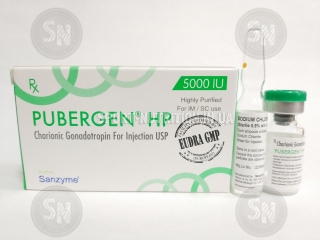
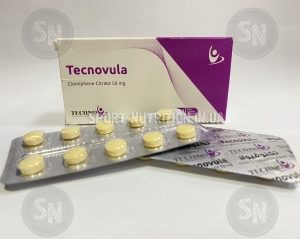
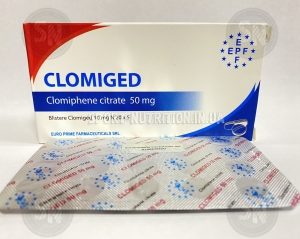
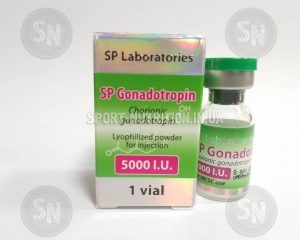
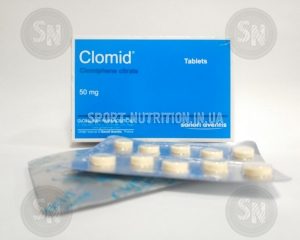
 |
|
Reviews
There are no reviews yet.